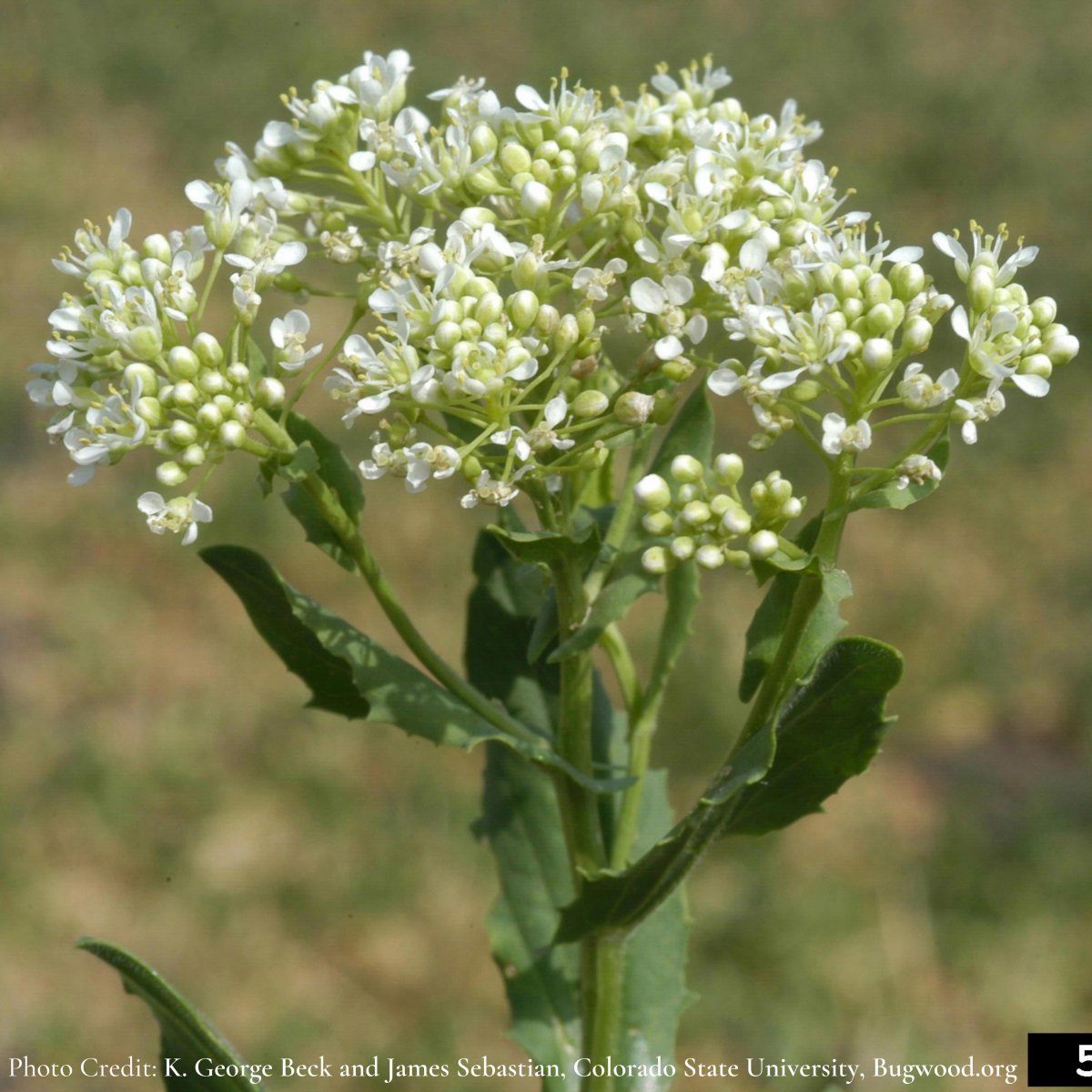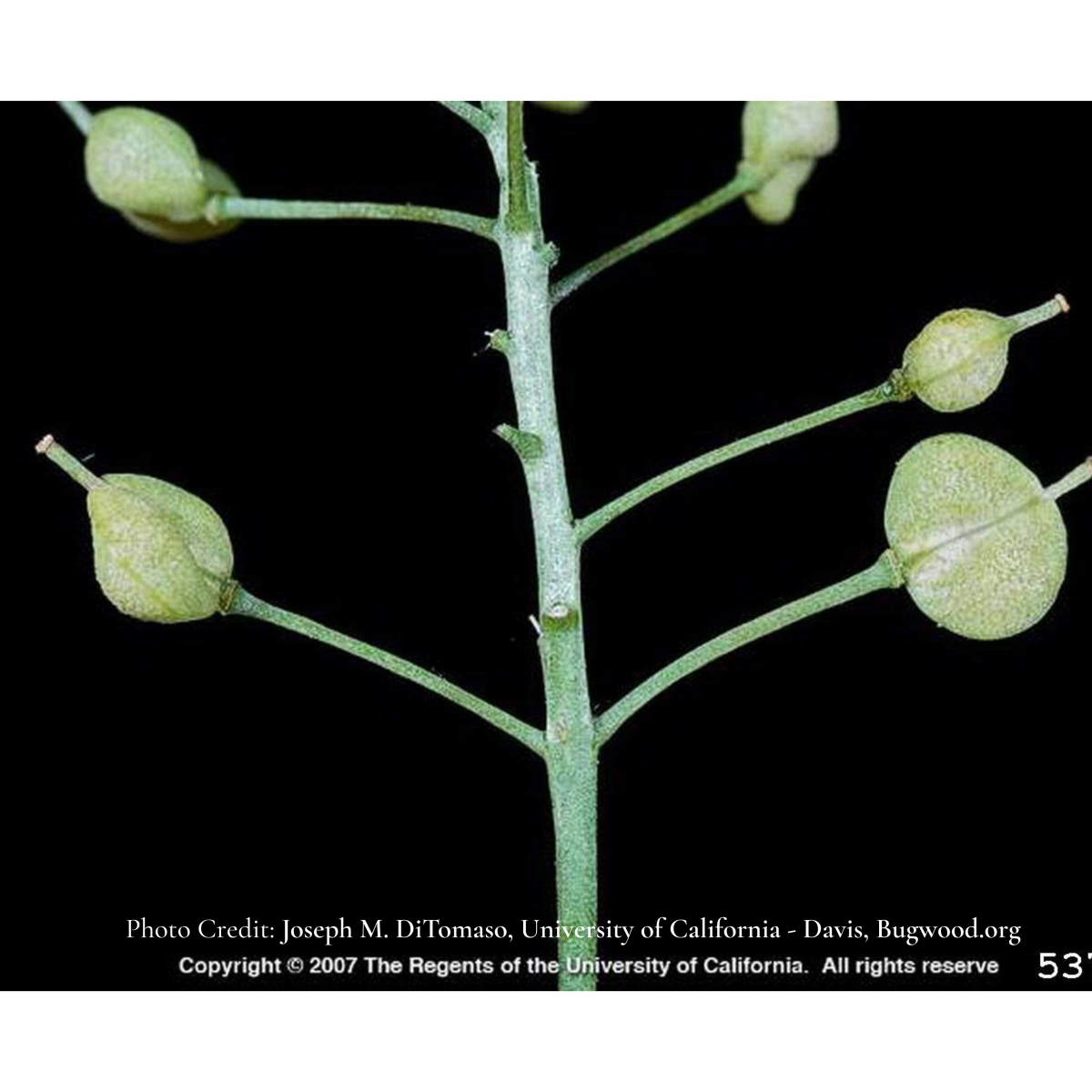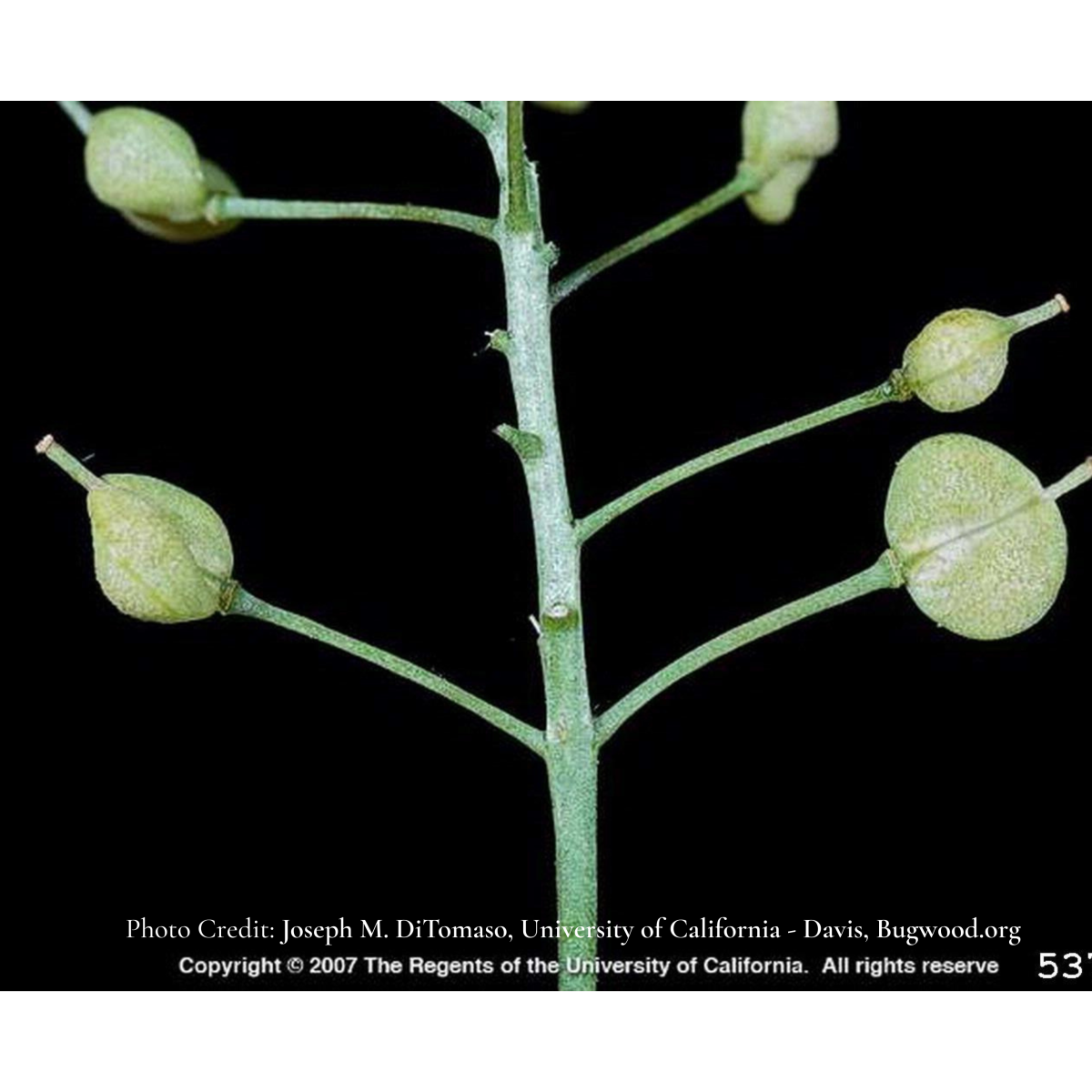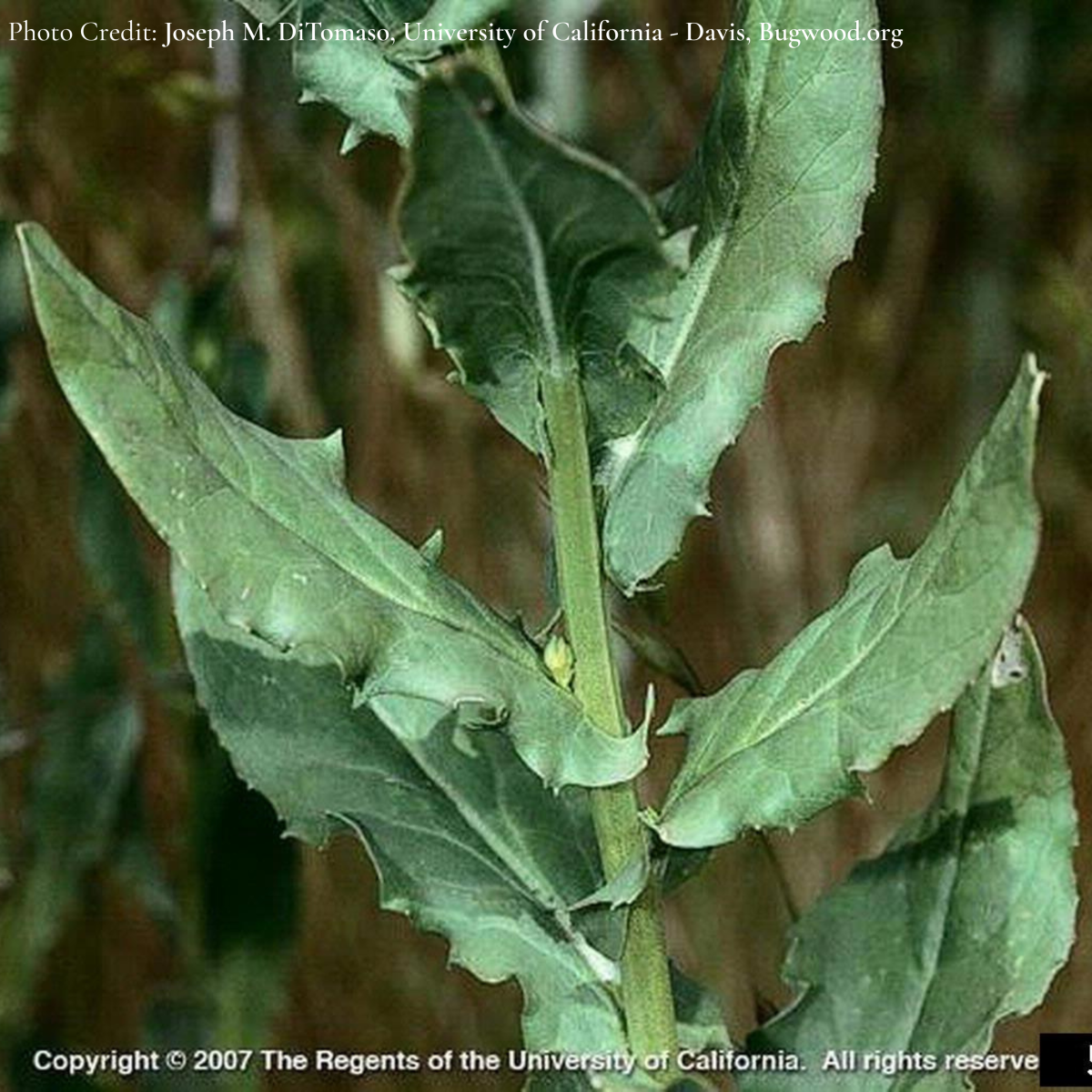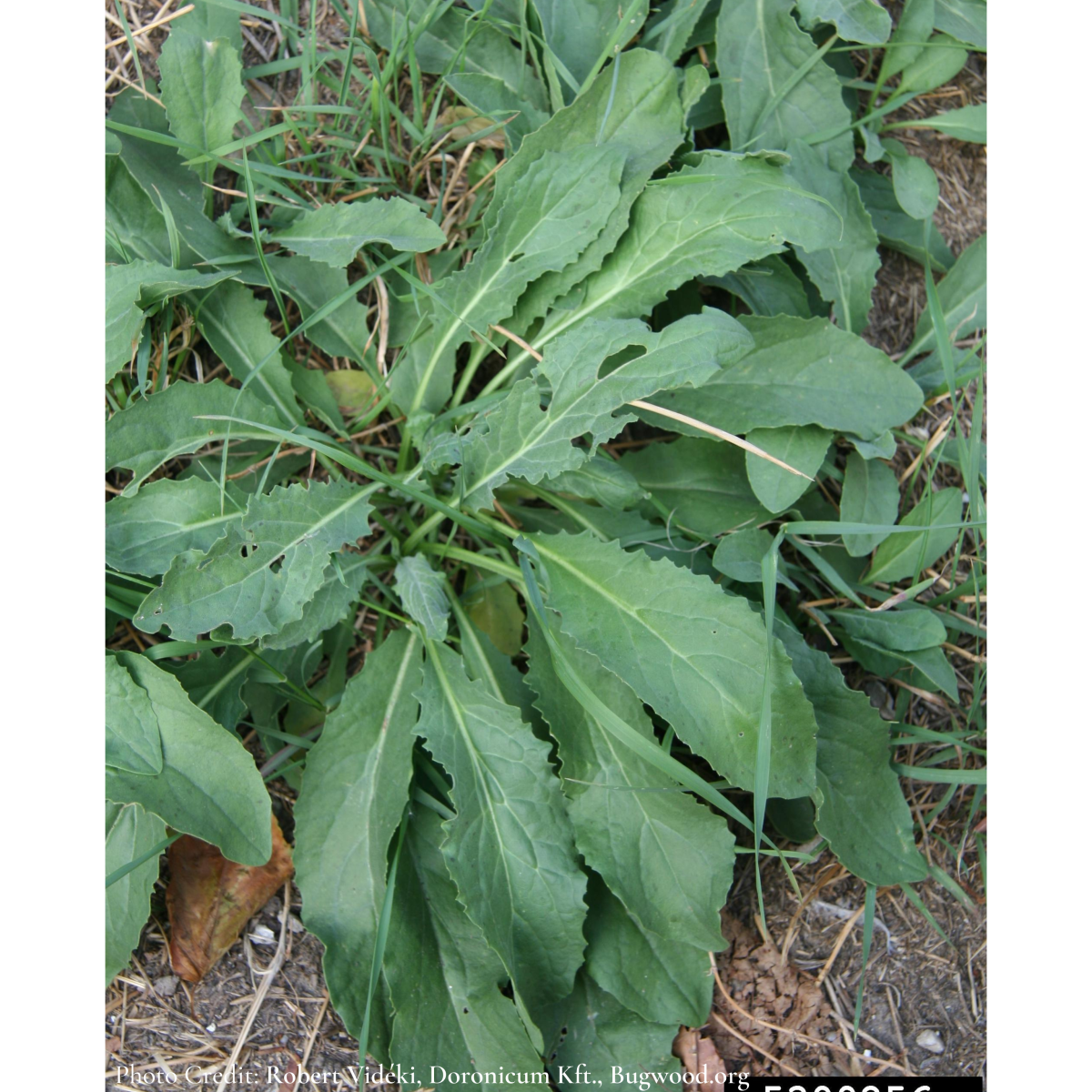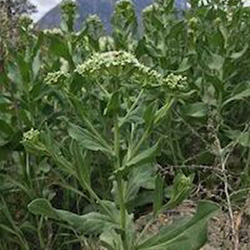
General: Hoary Cress is a plant in the mustard family that has a flat white topped appearance.
Height: It grows up to 50cm tall.
Flowers: It has clusters of very small white flowers at the top of the plant that create a flat top. Each flower has 4 petals.
Leaves/Stems: The leaves are 4-10 cm long, arranged alternately on the stem and are blue-green in colour. There can be more than one stem on a plant. The leaves have stalks near the bottom of the stem but clasp the stem near the top.
Root: Creeping roots that reach depths of typically 75-80cm but have been reported at a depth of 9m.
Whitetop, Heart-podded hoary cress, Pepperweed
Yarrow (Achillea millefolium) is a native plant that could be confused with Hoary Cress.
Differences: Yarrow has easily distinguishable leaves that are fine and feather-like. They are very different from Hoary Cress leaves that are solid, lance-shaped and toothed.
Where did it come from? Introduced from Eurasia.
Where does it grow here? It is found along roadsides, fields and other disturbed habitats. It prefers alkaline soils and is one of the first plants to emerge in our valley bottoms and flower.
Reproduction: It grows by seed and creeping root systems.
When does it grow, flower & seed? Sprouts in April. Flowers May–July. Seeds August-September.
Spreads By: In the LRISS region, we suspect that Hoary Cress has been introduced by agriculture activities and by roadside disturbance like ditching, grading and mowing. It can be spread in contaminated hay.
Plant Type: Perennial.
- It can contaminate alfalfa hay. It is, however, unpalatable to livestock.
- It can compete with native plants and spread very aggressively due to the creeping roots.
- Review your property regularly for this species.
- Treatment Remove small patches before it flowers & sets seed. This species is very aggressive and responds poorly to mowing. Full removal of the plant is necessary when there is an infestation that is less than a few meters squared.
- Cover bare patches or disturbed soil by planting or seeding with non-invasives.
- Check areas where you have removed invasives for any new plants that year and in future growing seasons.
- Dispose of invasive plants responsibly. Bag them for disposal at the local landfill. Composting and burning are not recommended.
- Contact LRISS for specific treatment recommendations.
Okanagan Invasive Species Online website
Southern Interior Weed Management Committee. 2016. Invasive Plants of the Southern Interior BC. 86pgs.
Photo Gallery
